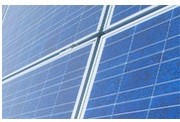This September the
Nature Inn at Bald Eagle State Park, the first facility of its type in Pennsylvania's state park system, opened its doors, offering visitors not only an up-close experience with nature, but an up-close experience with
green technologies.
Energy and water conserving features of the 18,500-sq.ft. Nature Inn include a geothermal system to provide heating and cooling;
solar collectors to heat water for showers and laundry; five rain barrels and four large cisterns to collect and harvest rainwater; and low-flow plumbing fixtures.
"As a southern entrance point to the 12-county Pennsylvania Wilds, this Nature Inn will welcome people to a region known for its wealth of state parks and forests and opportunities for wildlife watching and many other outdoor adventures," said Department of Conservation and Natural Resources (DCNR) Secretary John Quigley. "Along with offering a good night's rest, we also are demonstrating stewardship and conservation by connecting guests to outdoor activities in the park and showing them 'green' energy-efficient building features and how to collect and use rainwater."
Geothermal is first choice
The geothermal system is a closed-loop system consisting of 24 6-in. diameter vertical wells 300-ft. deep. The wells are divided into three groups of eight, located under the parking lot.
“The site selected is previously disturbed, and DCNR wanted to keep any disturbance of the surrounding woodland to a minimum, but the site is also long and narrow,” explained Michael Twigg, architectural supervisor of Pennsylvania’s DCNR Bureau of Facility Design and Construction. “DCNR has more than 20 geothermal systems at facilities around the state and the preferred location is generally an open field or yard, but for this project the selected location had to be beneath the parking lot.”
Geothermal was chosen for this project because past experience with geothermal heating and cooling has been successful for the DCNR.
According to Twigg, based on the performance of the geothermal systems at other locations, geothermal is generally DCNR’s first choice when constructing or upgrading major facilities.
The geothermal loop is connected to a Mitsubishi CITY MULTI Variable Refrigerant Flow (VRF) system, consisting of four WR2-Series water source heat pumps, four Branch Circuit (BC) refrigerant controllers, one connected with each of the heat pumps, and a variety of indoor units throughout the public and service areas of the Nature Inn.
“The VRF system provides several benefits including simultaneous heating and cooling, simple zoning, quiet operation, system simplicity, and a lower lifecycle cost,” said Twigg. “In addition, the VRF system allows for heat recovery of unneeded heat which can then be rerouted through the BC controller to areas of the building that need it without operation of the main compressor unit.”
Solar thermal system
A primary goal of the Nature Inn is to assist in delivering a message of resource conservation to the guests that visit the inn. Therefore, the solar thermal array for domestic hot water is located in a visible location — on a trellis above the doors directly from the main lobby where guests can see the panels.
“We thought that knowing that when you take a shower, or when your sheets and towels are laundered, part of the energy to heat the water was generated in a clean, fossil-fuel free manner was a powerful message,” said Twigg.
The solar thermal system is made of 80 vacuum tubes by Thermo Technologies. The tubes collect the sun’s heat, transferring it through a header manifold to a water loop. The water is then pumped to the hot water storage tank where the heat is transferred to the water stored in an 80-gal. Rheem solar water storage tank.
According to Jerry Plummer, vice president of K&K Plumbing Co., Johnstown, Pa., this was the first thermal system the company installed, and the installation went well.
“This took about two weeks,” said Plummer. “This project was unique since there are not a lot of these systems in the area.”
According to Twigg, the solar thermal system is estimated to meet roughly 50% of the annual hot water demand and save about 8,300 kWh of energy each year.
Water conservation
Besides having an up-close experience with solar thermal and geothermal systems, guests at the Nature Inn will also experience a water-conserving plumbing system and rainwater collection system.
Low-flow plumbing fixtures in conjunction with the rainwater collection system is anticipated to reduce total building water use by almost 200,000 gallons per year, or more than 45% over a typical building, according to Twigg.
Low-flow Symmons lavatory faucets and Moen showerheads are being utilized. Plus, EPA WaterSense-rated American Standard dual-flush toilets are used throughout the building, allowing guests to select the amount of water needed — either 1.6-gpf or 0.8-gpf.
“Besides the solar thermal system, the rainwater harvesting is unique to the building,” said Plummer. “This is the first rainwater harvesting system K&K Plumbing Co. installed, and it went smooth.”
make your own solar panels
Join The Green Club

 Share
Share

























